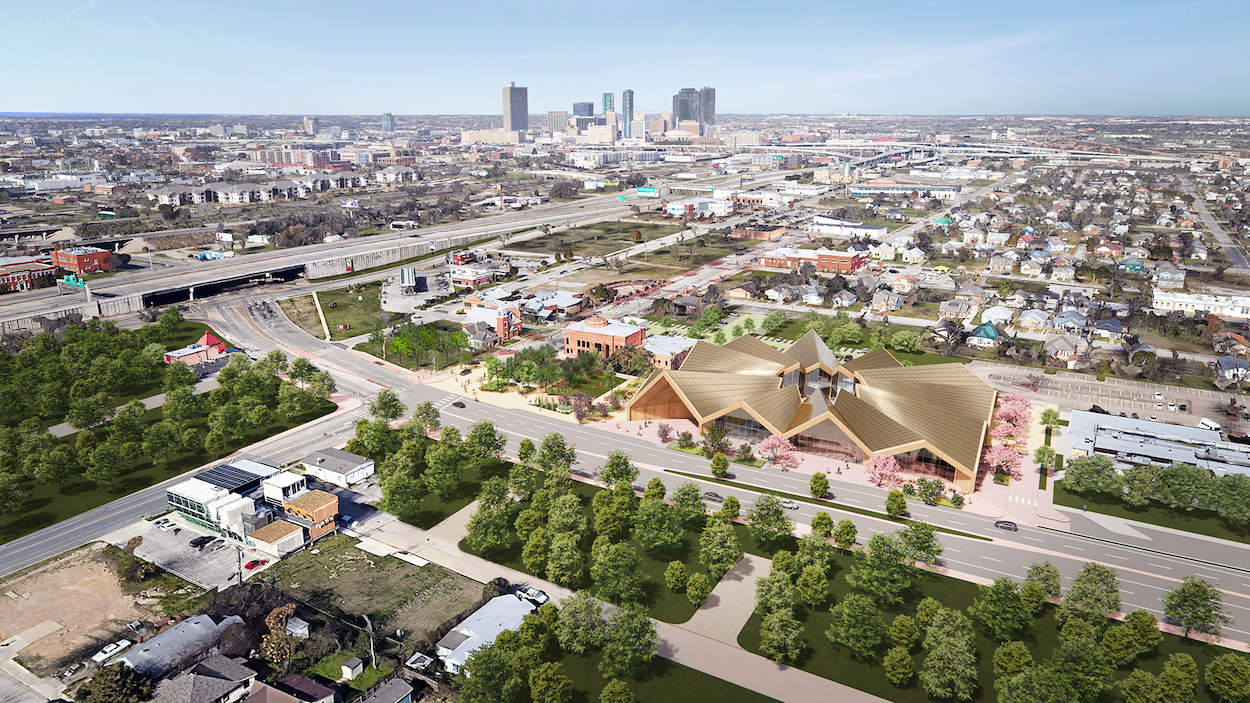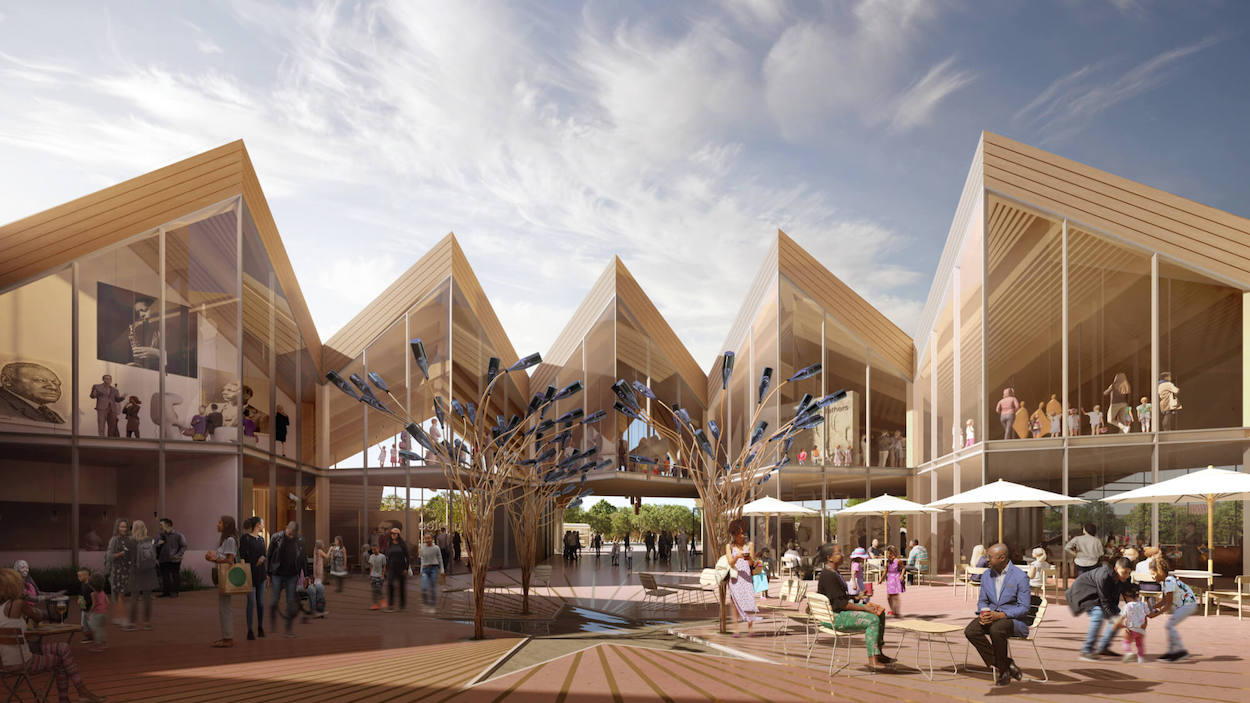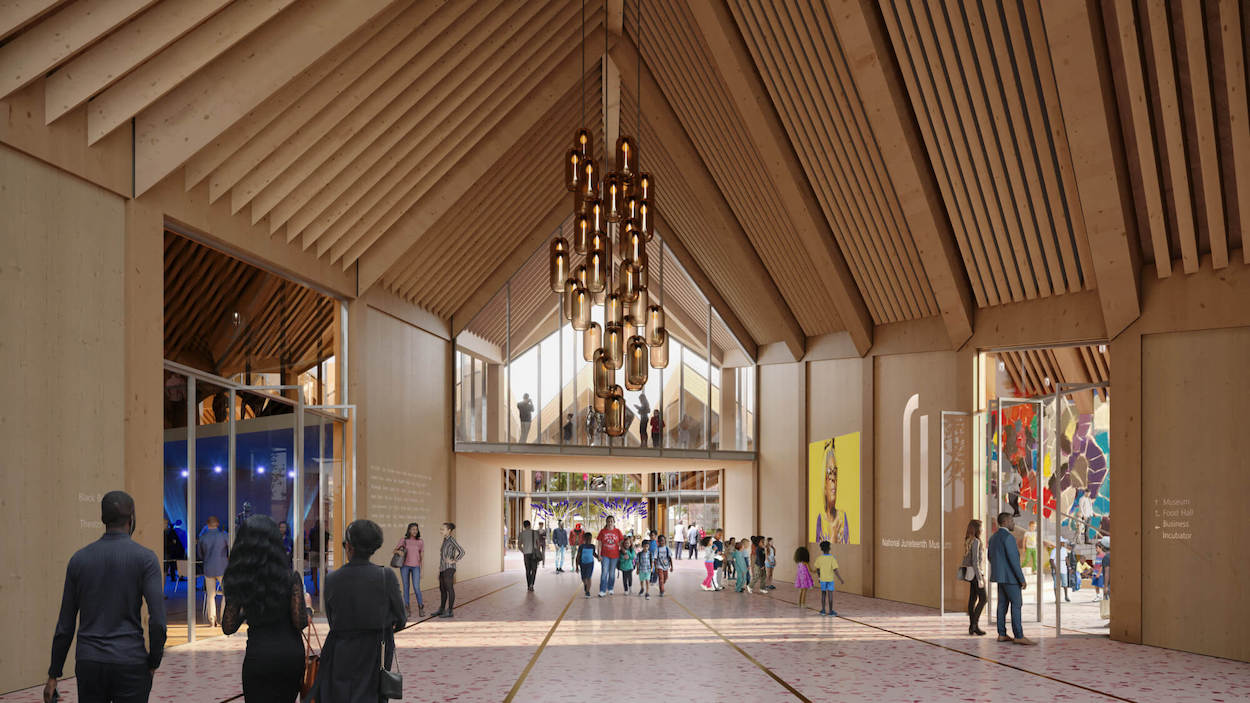For nearly two decades, Opal Lee has operated a modest Juneteenth Museum on the Historic Southside of Fort Worth, Texas. Though the institution has become a beloved community fixture and locals affectionately refer to Lee, now 95, as “the grandmother of Juneteenth,” she has tirelessly campaigned for the museum’s expansion as awareness of the holiday celebrating the emancipation of enslaved African Americans in the United States has become more firmly entrenched in the public consciousness. Thanks to a spate of private donations, her plans are much closer to materializing: The National Juneteenth Museum, which plans to open in a state-of-the-art new facility within the area by June 2024.
Designed by Bjarke Ingels Group (BIG), the museum hopes to become a vitalizing community force thanks to ample educational space, a food hall for local businesses, a recording studio where visitors can provide spoken testimonies about their own histories and heritage, and a business incubator supporting Black entrepreneurs. Exhibitions will focus on the broad story of emancipation and touch upon the unwavering support of the Quakers, the Underground Railroad, and Sam Houston, president of the Republic of Texas who outlawed the illegal import of slaves into Texas in 1837.
BIG’s Douglass Alligood, a Black architect and partner in charge on the $70 million project, was tasked with creating a building that “captures the spirit of Juneteenth, expresses its historic gravity both locally and globally, and celebrates the cultural heritage of the Historic Southside.” (The firm is off to a rocky start: Architecture Twitter was quick to point out that initial renderings by BIG, a white-owned firm with a shaky history with diversity, actually depict the decade-old skyline of Austin, not Fort Worth, and questioned why they didn’t defer to obvious symbolism.) The star-shaped timber structure will draw from vernacular architecture with details like gabled roofs and “have a handcrafted quality,” according to Alligood. BIG is collaborating with the local office of KAI Enterprises, one of the country’s largest minority-owned AEC firms.
Lee hopes the museum’s influence will reverberate far beyond its walls and spark revitalization efforts in the downtrodden area, a once-thriving neighborhood that suffered when a midcentury highway split it in half. If all goes according to plan, the institution will join the likes of the National Museum of African American History and Culture in Washington, DC, and Alabama’s National Memorial for Peace and Justice as one of the country’s foremost institutions celebrating Black heritage.
“You cannot talk about the history of the country too much,” Dione Sims, Lee’s granddaughter and the museum’s founding executive director, tells the New York Times. “You cannot talk too much about what is still pervasive in our culture, in our national narrative, that is affecting so many lives today: systemic racism rooted in slavery. The freedom from slavery, or the emancipation of the human spirit, is what we’re going to help elevate.”
Update (June 23, 2022): An earlier version of this article pictured an aerial rendering of the National Juneteenth Museum within Austin, Texas. That image has since been removed. The above aerial rendering has been updated to reflect the museum’s location within Fort Worth.


